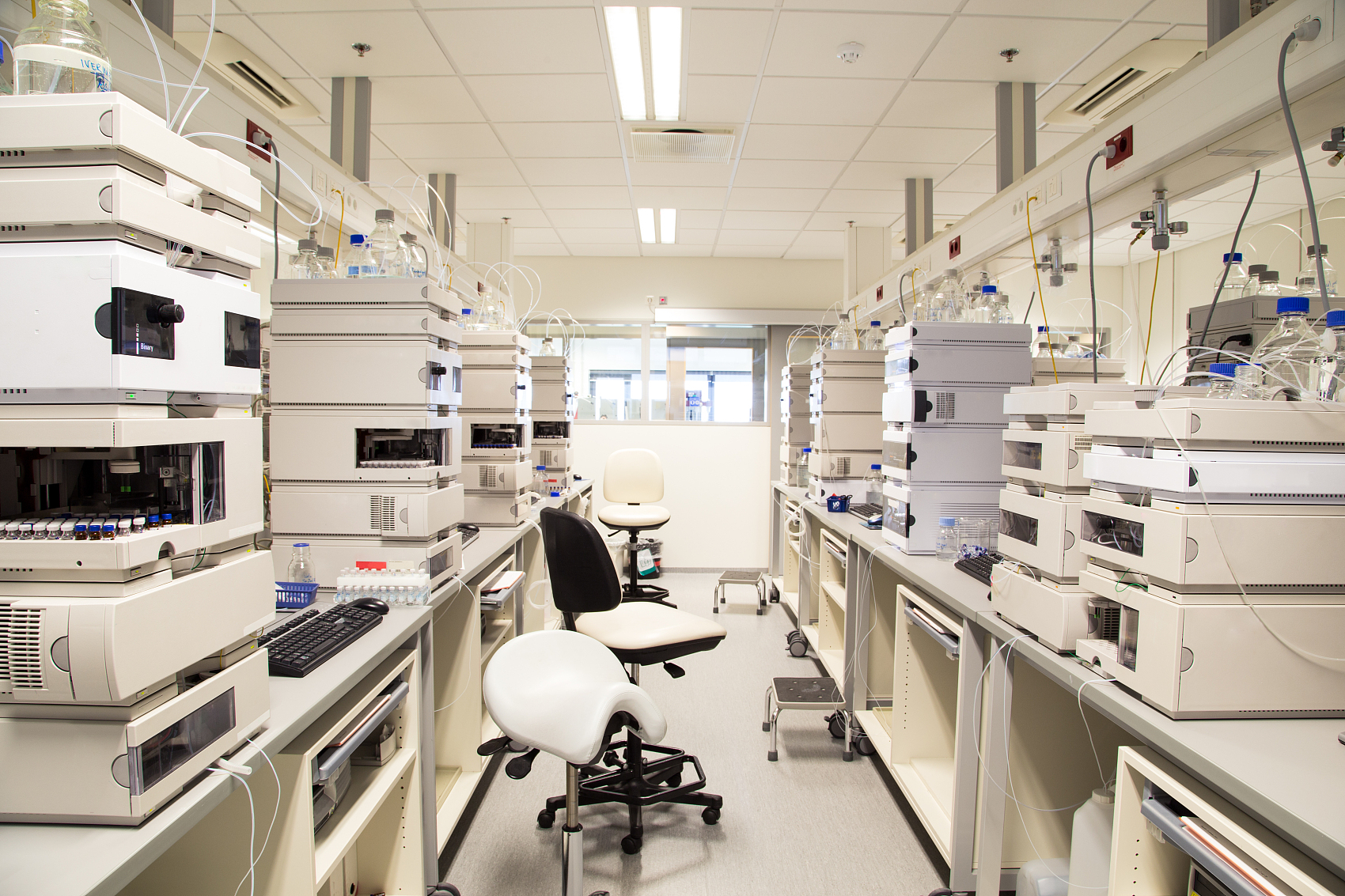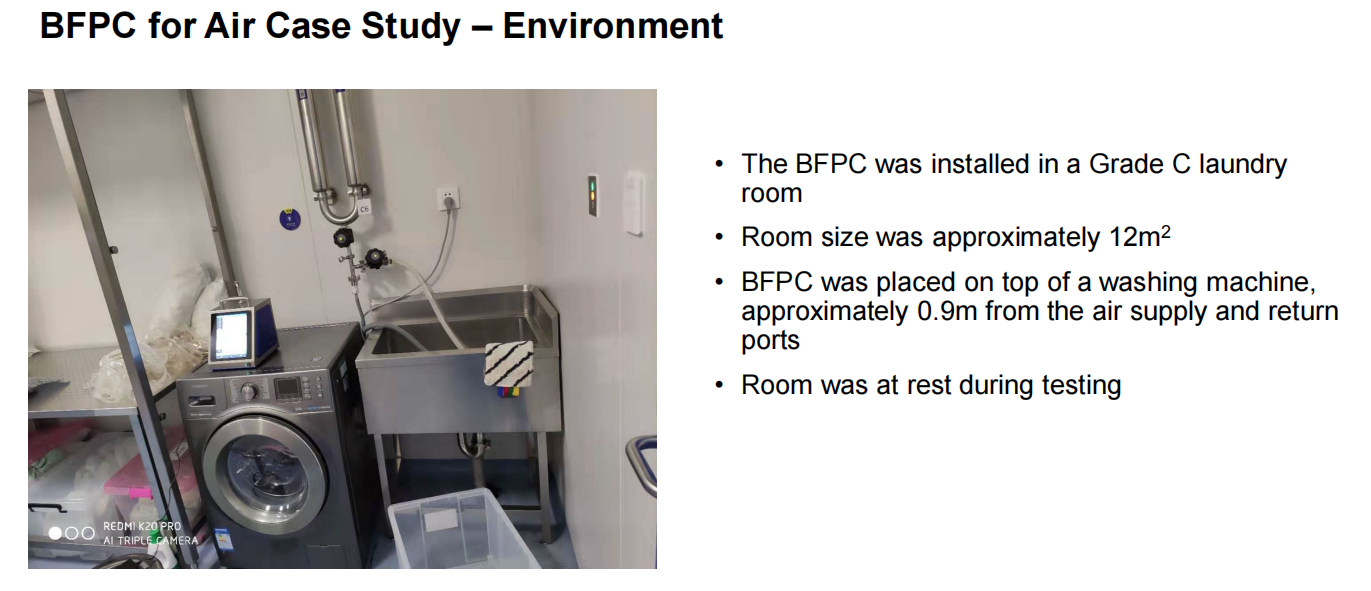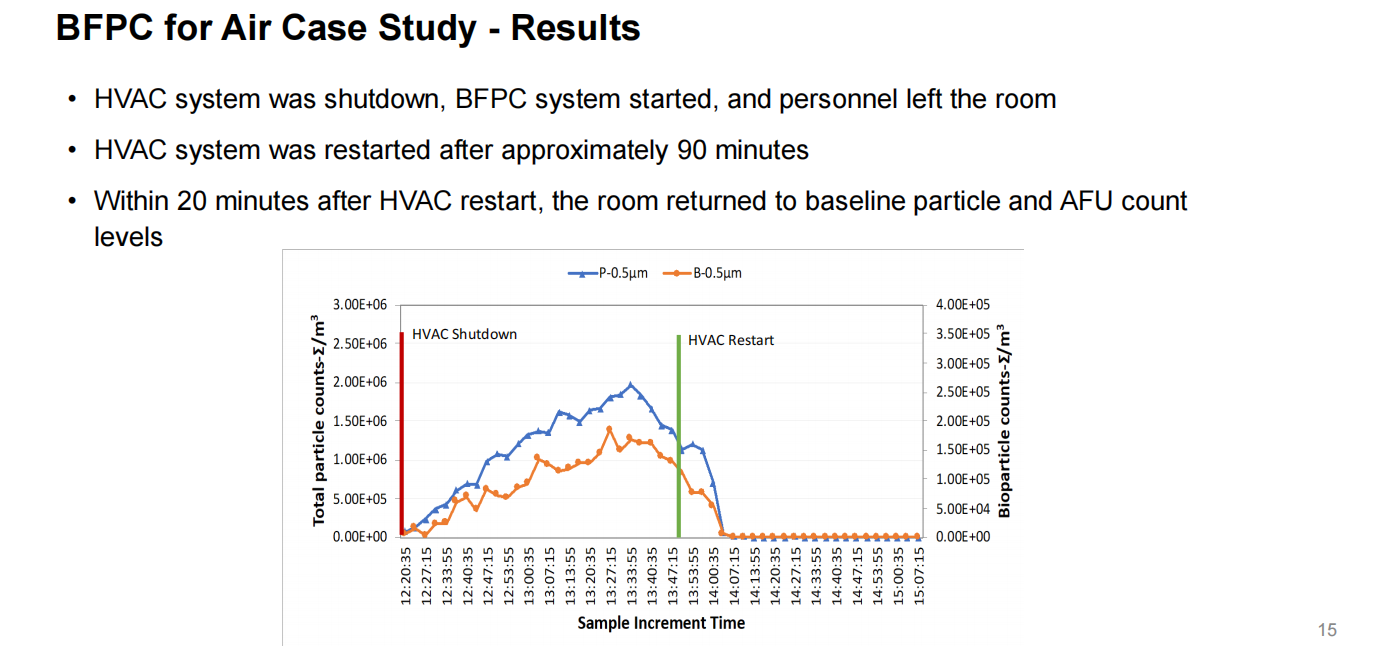Views: 0 Author: Site Editor Publish Time: 2022-11-02 Origin: Site

Abstract
Bio-Fluorescent Particle Counters provide superior monitoring capabilities over the traditional plate count method due to their ability to monitor continuously with no sample preparation or manipulation, and also over classical particle counters due to their ability to discriminate between inert and biological particles. Resolving inert and biological particles from total particles can provide critical diagnostic information in air and water systems. This article presents four case studies illustrating the use of Bio-Fluorescent Particle Counters in resolving complex environmental monitoring investigations.
Bio-Fluorescent Particle Counters (BFPCs) are laser-based particle counting monitors used to measure inert and biological particles, referred to as Auto-Fluorescent Units (AFU), in clean water or air systems. The fact that the instruments can detect both inert and biological particles provide powerful advantages over classical particle counters, which only detect particles based on size without classifying them by type. Furthermore, the continuous as opposed to intermittent detection of biologic particles provides a distinct advantage over the traditional plate count method by offering a superior Environmental Monitoring (EM) profile of pharmaceutical manufacturing conditions for improved product quality decisions.
The Basis for Bio-Fluorescent Particle Counting Technology
Particle counting has a long history, stretching back to the middle of the last century, and can be applied to both air and water systems. In these classical systems, a light beam intersects a stream of air or water. As a particle travels through the beam, the physics of light scatter allows detection of the particle and classification of its size via Mie scattering. BFPCs take this principle and layer on an additional level of detection. Biologicals (bacterial and fungi) contain biomolecules that fluoresce at specific wavelengths when illuminated by specific shorter wavelengths of light. The addition of other detector(s) in BFPC systems, tuned to a specific range of wavelengths, creates a system that detects particles and assigns the particles to presumptive biologic and inert categories. In contrast to Colony-Forming Units (CFU) derived from traditional culture-based sample analyses, the unit of measure for BFPC is the AFU.
The Need for Improved/Faster Environmental Monitoring Methods
On-going public health risks associated with COVID-19 and the need to manufacture billions of dosage units for worldwide distribution quickly have cast a spotlight on improving or replacing slow and inefficient methods of manufacturing. Among these methods is microbial environmental monitoring, which typically requires 5-7 days of incubation to obtain a result stating whether the process stream or environment was suitable or not. BFPC-based detection provides real-time feedback on the level of inert and biological particles in an environment, allowing enhanced process understanding of the environment that can save countless days of waiting on results. BFPCs also allow for rapid troubleshooting and diagnosis of environmental excursions. This supports product and production time savings due to the accelerated path to a root cause since the detection is not dependent on colony growth.
Real-World Use of BFPC Monitoring
While BFPCs have been commercially available for more than a decade, the number of open literature reports of fi eld applications is somewhat limited. An early report showed that a BFPC-based air monitor could provide comparable results at a faster rate than conventional methods in pharmaceutical cleanrooms.1 Similarly, Sandle et al. used the same model instrument to evaluate cleanroom conditions in real-time (see below details).2 In 2015, a study by Anders et al. demonstrated the utility of a BFPC water monitor for extending the hold time of a water system.3 Lipko et al. published their experiences with using a BFPC water analyzer for monitoring a high purity water system in 2018.4 Also in 2018, there were two studies published describing the use of BFPC analyzers (both air and water) for facilitating the re-start of production facilities.5,6


Cleanroom Air Shutdown and Recovery Study: Case Study 1
The following case study at a pharmaceutical company shows a non-GMP investigation using an air-based BFPC to determine the impact and recovery time of shutting down the HVAC system in a Grade C cleanroom. Quality Assurance wanted to assess the impact of shutting down the HVAC system on biological and dust particles, as well as recovery of the environment after restarting. Personnel stated that they often have a short period, usually around two hours that the HVAC system is stopped. If the environment can be restored simply by running the HVAC system, there is no need to do extra cleaning and reconfirmation, which will save time and labor.
The BFPC was installed in a 12 square meter, Grade C laundry room. The HVAC system was stopped, all personnel left the area and the BFPC sample was started at 12:20 pm. The HVAC system was restarted at roughly 2:00 pm.
As shown in Figure 2, after the HVAC system was turned off, the AFU and total particle (P) counts began to rise. When the HVAC system was restarted, the AFU and total particle counts began to decline dramatically. The number of particles per meter cubed dropped to zero within 20 minutes of the HVAC restarting. It was determined that if the HVAC system was suspended for two hours and then restarted, without other measures, the system could complete self-purification within 20 minutes.
More Case Studies refer to:
Conclusions
The case studies given in this paper and the other cited studies give clear evidence that bio-fluorescent particle counters (BFPCs) have major advantages over conventional methods in providing results in real-time and instantaneous discrimination of inert versus biological particles. These advantages provide the promise of improving or replacing slow and inefficient methods of manufacturing monitoring and environmental control.
References
1.Bolotin C, Varnau B, Nelson JR, Bhupathiraju VK, Jiang JP. Evaluation of an instantaneous microbial detection system in controlled and cleanroom environments. BioPharm International. 2007;20.
2.Sandle T, Leavy C, Jindahl H, Rhodes R. Application of rapid microbiological methods for the risk assessment of controlled biopharmaceutical environments. Journal of Applied Microbiology. 2014;116(6):1495-1505.
3.Anders HJ, Ayres FB, Bolden J, et al. Online Water Bioburden Analyzers: A Case Study for the Extension of Purified Water Hold Times. Pharmaceutical Engineering. 2015;35:119-124. 4. Lipko B, Termine B, Walter S. Case Study: Retrofitting Two New High-Purity Water Systems. Pharmaceutical Technology Biologics and Sterile Drug Manufacturing. 2017;18–26. Available at:
http://files.pharmtech.com/alfresco_images/pharma/2019/04/24/%20afdeeb30-52a1-4b1e-b5a0-bd32528a2648/PT_Biologics-and-Sterile-Drug-Manufacturing_5-1-2017.pdf
4.Montenegro-Alvarado JM. Leveraging rapid microbiological methodology in forensic evaluation to identify elusive root cause. American Pharmaceutical Review. 2018. Available at: https://www.americanpharmaceuticalreview.com/Featured-Articles/353500- Leveraging-Rapid-Microbiological-Methodology-in-Forensic-Evaluation-to-Identify[1]Elusive-Root-Cause/
5.Montenegro-Alvarado JM, Salvas J, Weber J, Mejías S, Arroyo R. Pfizer Case Study: Rapid Microbial Methods For Manufacturing Recovery After Hurricane María. Pharmaceutical Online. 2018. Available at: https://www.pharmaceuticalonline.com/doc/pfizer[1]case-study-rapid-microbial-methods-for-manufacturing-recovery-after-hurricane[1]mar-a-0001
6.Hjorth J, Annel P, Noverini P, Hooper S. GMP Implementation of On-Line Water Bioburden Analyzers. Pharmaceutical Engineering. 2021. Available at: https://ispe.org/ pharmaceutical-engineering/january-february-2021/gmp-implementation-online[1]water-bioburden#
Author
The Process and Environmental Monitoring Methods (PEMM) working group is composed of members from the pharmaceutical and personal care industries, BFPC instrument manufacturers, and industry consultants whose aim is to support the adoption of and education on real-time BFPC methods for air and water applications.
